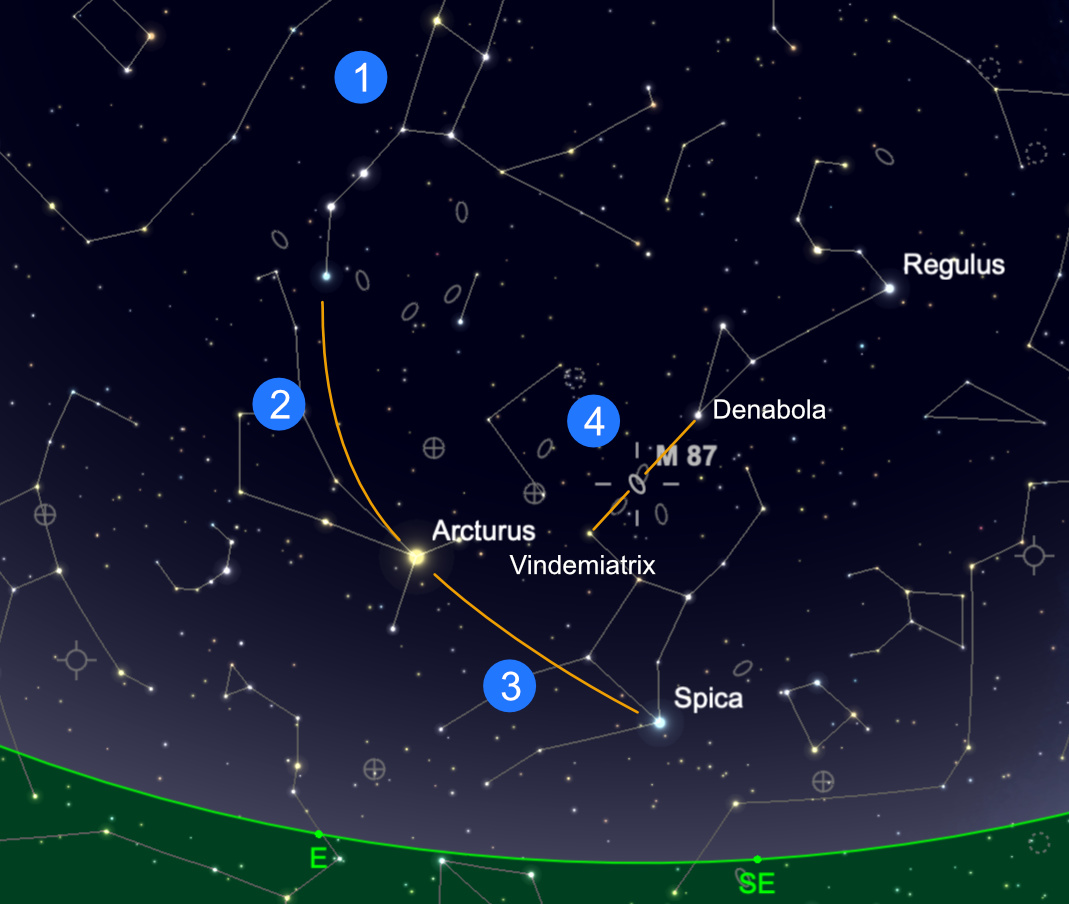| 2019: The first photographed Black Hole ever (2020-3-08) ⬅︎ |
 |
What great timing... M87, the galaxy with the first photographed black hole, is in Virgo, a springtime constellation.
So now is a great time to try to find it. However, finding M87 can be challenging being so far away at 53 million
light
years. You will need
a good binocular or telescope. The sky must be dark,
clear and free from as much light pollution as possible. You'll need a good view to the south. Then, using the
diagram above, follow these steps:
1) Find the Big Dipper.
2) Follow the arc of the Big Dipper's handle southward to the bright star Arcturus in Bootes.
3) Keep going southward to bright Spica in Virgo.
4) Find Vindemiatrix in Virgo and Denebola in Leo. In your mind, form a line between them. Look about halfway for
M87. If using a binocular, hold it very steady or, better yet, use a tripod. If using a telescope, use a low-power
eyepiece. Scan the area along the line.
Even though M87 is the brightest galaxy in this part of our sky, it likely will appear only as a round, featureless
'smudge' barely brighter than the background sky.
Be careful... along the same line and fairly close to M87 are two other galaxies that are nearly as bright: M86 is
a
bit closer to Denebola and M60 is a bit closer to Vindemiatrix. You may find more smudges that are even dimmer.
In fact, there are literally thousands of galaxies in this region that are all part of the Virgo Supercluster of Galaxies.
Once you find M87, don't expect to see the black hole at its center for it makes up only a small part of this massive
galaxy. But do try to imagine the black hole, with its
supermassive gravity, sucking in one star after another... billions already... how incredible is that to see where all
the action is!
Good luck! |
| |



